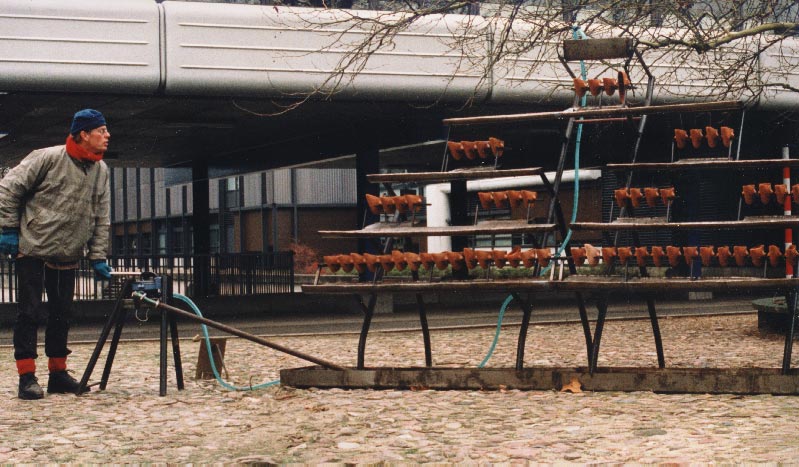
Project together with TARt (technics and art) and students CTW (mechanical engineering) of the Twente University in Enschede. I wanted a sculpture that used water, like water in a creek. And i wanted no bolts. We ended up in casting ceramic objects that tip over when they are full with water, like the well known garden ornaments. Why mountview? That's a homage to West Virginia where i stayed for a couple of months near the Blue Ridge and still dream of it.
How does it work? One pump brings water to
the top level, which drains into 4 ceramic buckets, that tip and the next level,
8 buckets, are filled, 16 buckets, 32 buckets and so on. Hhow will you make all those
ceramic buckets? With a mold and casting
clay, that is liquified clay. How do you make that? Take ordinary clay and add
a little waterglass, stirr it and the clay becomes liquid. Leave it and it sets
again. This is a colloid-fysical reaction that i knew of my agricultural education:
some sodic clays can't be tilled. It was something well usable and many buckets
could easily be casted from a gypsum mould. Quite a revelation for the mechanical
engineering students that saw this trick for the first time. Something mechanical
without nuts and bolts, that moves, is controllable. Interesting.
Can we model
this system? Yes, in Working Model, a simulation program that works with mechanical objects and applies the known formulas to it. It gives fascinating results and i started to use it to animate texts as well: characters bouncing, tumbling against each other which added content.
This project appaered to be some key moment in my work, i kept using the water principle, even though sometimes it seemed to be distant. My fascination for mechanics and thinking about it's effects and use was shared here and years later i started to study here myself, industrial design engineering.
